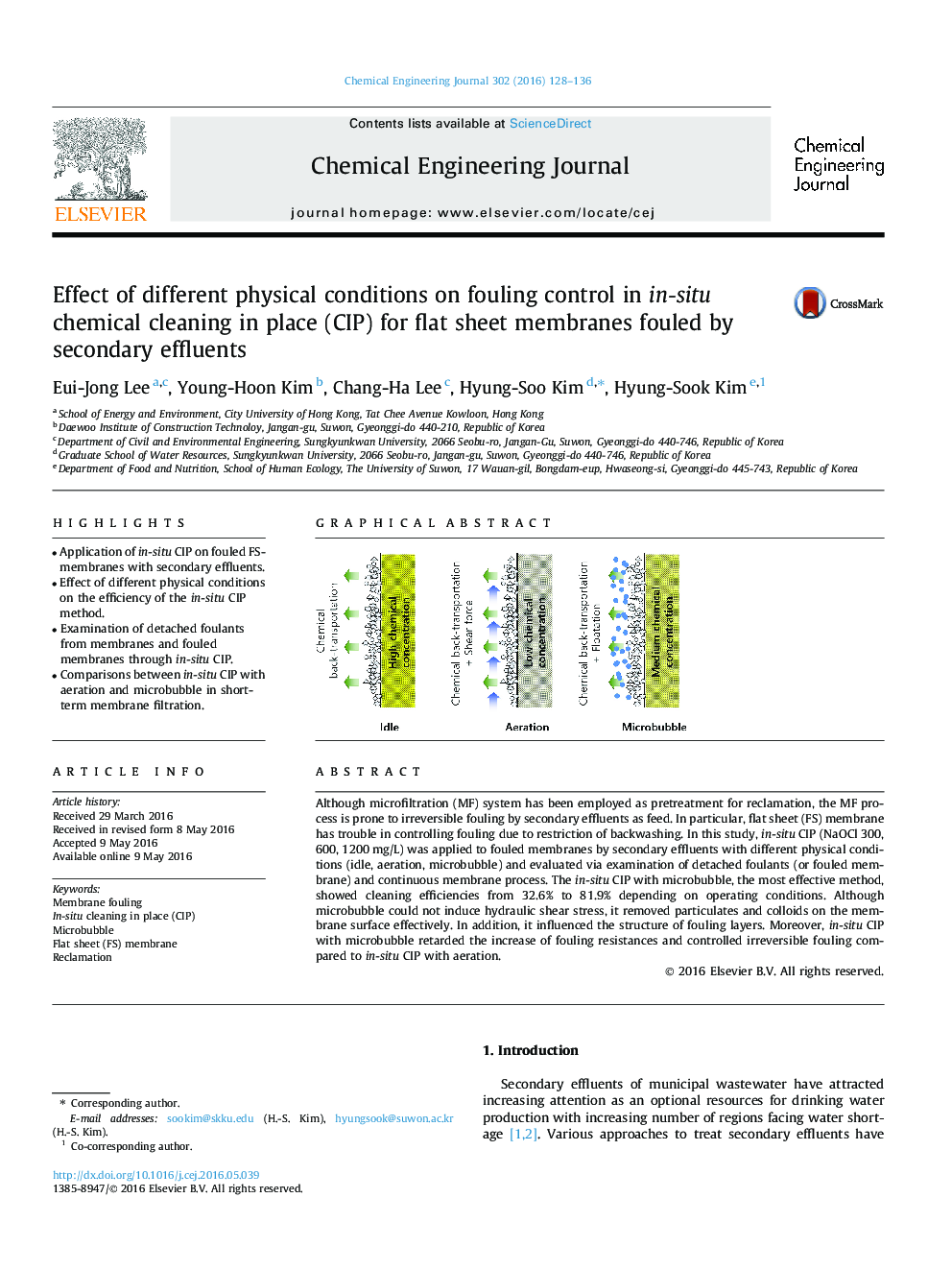| کد مقاله | کد نشریه | سال انتشار | مقاله انگلیسی | نسخه تمام متن |
|---|---|---|---|---|
| 145303 | 456338 | 2016 | 9 صفحه PDF | دانلود رایگان |

• Application of in-situ CIP on fouled FS-membranes with secondary effluents.
• Effect of different physical conditions on the efficiency of the in-situ CIP method.
• Examination of detached foulants from membranes and fouled membranes through in-situ CIP.
• Comparisons between in-situ CIP with aeration and microbubble in short-term membrane filtration.
Although microfiltration (MF) system has been employed as pretreatment for reclamation, the MF process is prone to irreversible fouling by secondary effluents as feed. In particular, flat sheet (FS) membrane has trouble in controlling fouling due to restriction of backwashing. In this study, in-situ CIP (NaOCl 300, 600, 1200 mg/L) was applied to fouled membranes by secondary effluents with different physical conditions (idle, aeration, microbubble) and evaluated via examination of detached foulants (or fouled membrane) and continuous membrane process. The in-situ CIP with microbubble, the most effective method, showed cleaning efficiencies from 32.6% to 81.9% depending on operating conditions. Although microbubble could not induce hydraulic shear stress, it removed particulates and colloids on the membrane surface effectively. In addition, it influenced the structure of fouling layers. Moreover, in-situ CIP with microbubble retarded the increase of fouling resistances and controlled irreversible fouling compared to in-situ CIP with aeration.
Figure optionsDownload as PowerPoint slide
Journal: Chemical Engineering Journal - Volume 302, 15 October 2016, Pages 128–136